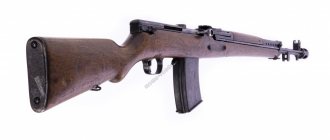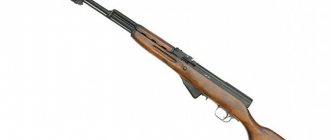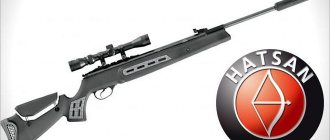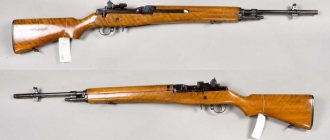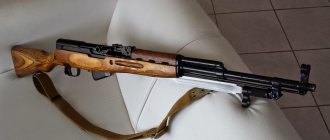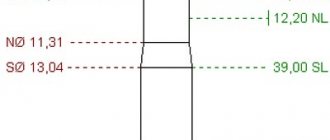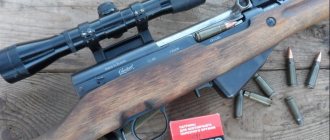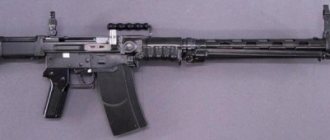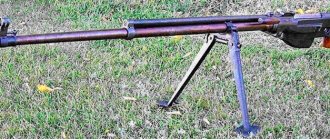Biography of the designer who created the ABC-36 automatic rifle, the PTRS-41 anti-tank rifle and the SKS-45 carbine
Among domestic gunsmith designers there have always been plenty of self-taught ones. Vasily Degtyarev, Fedor Tokarev, Georgy Shpagin - all of them entered the profession without any special engineering education. The wonderful gunsmith Sergei Simonov stands in the same row. During his life, he created over 150 models of small arms, but only three of them were adopted for service and were produced in large series. Although, to immortalize his name forever, just one would be enough. After all, the ABC-36 automatic rifle, the PTRS-41 multi-shot anti-tank rifle and the SKS-45 self-loading carbine brought fame to the gunsmith Simonov.
A designer with a peasant's acumen
Everyone who worked next to Sergei Simonov, and even more so with him, noted two specific traits of his character: extreme accuracy and the desire to bring each design to perfection. Most likely, both traits were inherited by him from his peasant ancestors. No one else strives so much for the simplicity and convenience of a tool as a peasant, and no one else tries so hard to keep the house in order. Moreover, if this is not just a peasant family, but one of the poor. It was in such a family that the boy Seryozha, who was destined to become a famous Soviet gunsmith, was born on September 22 (October 4, according to the present day), 1894. Fortunately for Simonov, his parents understood that only education would open the way to a better future for the boy, and they gave him the opportunity to graduate from a three-year village school. This education will be the only one completed in the life of Sergei Simonov. He will learn the rest of the science that will transform him from a peasant son into the creator of legendary weapons from machines and drawing boards.
Sergei proved his penchant for invention and working with metal quite early. As a teenager, he designed and assembled a wooden butter churn for his mother, and when he got his hands on a broken bicycle, he restored it and began riding it to the forge, where he got a job as an apprentice in 1910. His blacksmith training was enough for him to soon master metalworking, and finally, in April 1917, get a job as a toolmaker at a machine gun factory in Kovrov.
This was probably the main success in the life of Sergei Simonov - he achieved everything else through his own tireless work. At the same plant in the early spring of 1918, two other future legends of the Soviet arms industry came to work: Vladimir Fedorov and Vasily Degtyarev. It was they who became the teachers of the talented young man, who already knew for sure that he wanted to devote his life to creating a new weapon. But before he started creating his own designs, he thoroughly studied what others had designed. In particular, mechanic Simonov was engaged in fine-tuning and debugging serial samples of the famous Fedorov assault rifle - the first domestic model of automatic hand weapons, adopted for service in 1916 and remaining in service until the beginning of the Great Patriotic War.
To speed up and simplify the marking of parts of this machine, Sergei Simonov developed his own machine. The penchant for design did not escape Vladimir Fedorov and Fedor Tokarev, and they decided to involve a talented young guy in the development of new types of weapons. In 1922-23, under dual leadership, he participated in the creation of his first developments - a light machine gun and an automatic rifle. Moreover, these designs were distinguished by one unusual feature: they did not have a single threaded connection! This was done quite deliberately, since Simonov well understood how different types of screws complicate the weapon and make its assembly and disassembly more labor-intensive. And in production, threaded connections are also more complex, and the young gunsmith wanted to create a weapon that would be easy and simple to make. Therefore, he not only abandoned carving, but also tried to use stamping and casting in the design as widely as possible.
Ammunition
The rifle was supplied with ammunition from detachable sickle-shaped magazines holding 15 rounds. The shape of the magazine was determined by the presence of a protruding lip on the cartridge used. Magazines could be loaded either separately from the weapon or on it, from standard clips. Models of the rifle produced before 1936 could also be equipped with magazines for 10 and 20 rounds.
First automatic
Very quickly, Sergei Simonov realized that it is possible to simplify the design of weapons, but it is impossible to make the fate of the weapons designer simple. His first developments, although appreciated, received a colossal number of comments. In particular, Simonov placed the gas exhaust system of his automatic rifle on the side, which seriously affected the shooting accuracy. There were other major and minor shortcomings that led to the fact that neither the rifle nor the machine gun were accepted for service. Nevertheless, these projects did not go unnoticed: when in 1924, on the initiative of the People's Commissar for Military and Naval Affairs Mikhail Frunze, it was decided to begin developing a light machine gun for the Red Army, Sergei Simonov was among the designers who were involved in this work. He was asked to return to Kovrov from the Podolsk sewing machine factory, where he had gone to work a year earlier, and begin creating a new type of weapon.
This had to be done in fits and starts: in Kovrov, the development of the production of Vasily Degtyarev’s light machine gun was in full swing. Only in the late 1920s did Sergei Simonov receive the status of head of an experimental workshop and complete work on his light machine gun. The invention was highly appreciated by the Main Artillery Directorate, but was not allowed into mass production: this niche of the Red Army was already occupied by the DP-27.
But the niche of an automatic rifle remained free, the project of which Simonov began working on in the early 1920s. It was in this field that the designer’s first success awaited him. Although the first model, presented in 1926, was not even allowed to be tested, in 1930 only two self-loading rifles reached the finals of the competition - Simonov himself and Fedor Tokarev. And then the former student was able to prove that he had learned everything he could from his teacher: the Simonov automatic rifle was recommended for adoption, having outperformed the Tokarev model based on the results of field tests. Suffice it to say that it withstood a cycle of 10 thousand shots without any problems, and the maximum range round was 27 thousand!
In order to launch his creation into series as soon as possible, Sergei Simonov even had to abandon his studies at the Moscow Industrial Academy, where he entered in 1932, being already an almost forty-year-old experienced gunsmith. Instead, the designer went to Izhevsk, to the local mechanical plant, where the production of his rifle was underway. In fact, production had to be organized from scratch, and here Simonov found the experience of similar work gained in Kovrov during the organization of the production of the DP machine gun very useful. As a result, in 1936, his ABC was finally adopted and put into large-scale production under the symbol ABC-36, that is, the “Simonov automatic rifle of the 1936 model.”
From shotgun to carbine
Two years later, production of the ABC was discontinued in favor of the Tokarev SVT-38 self-loading rifle. It would seem that failure should break Sergei Simonov. But he had long ago realized that the work of a gunsmith is to constantly improve inventions, even if they are not adopted for service. And instead of demanding a review of the results of the next competition on a self-loading rifle, he began developing new designs. He acted this way all his life: if his sample failed in tests or received negative feedback, the gunsmith silently began to fine-tune or rework it.
The only case when the weapon he created was adopted almost instantly and without comment was the release of the five-shot PTRS anti-tank rifle. It was done under extreme time pressure in the summer of 1941: People's Commissar of Armaments Dmitry Ustinov allocated exactly a month for all the work. The deadline was met, although, as Sergei Simonov himself later recalled, “we worked without leaving the workshop, day and night.” What helped was the decision to create a gun based on the design of one of the rifles, which was simply enlarged to chamber a 14.5 mm caliber cartridge.
On August 29, 1941, the PTRS was put into service, and already in November the first production samples received their baptism of fire near Moscow. The production of Simonov anti-tank rifles continued until 1945, and they received good fame among the troops. Yes, the PTRS was heavier and more complex in design than the Degtyarev PTRD, but it was noticeably superior to it in rate of fire due to the five-round magazine. Over four years of serial production, almost 191 thousand Simonov anti-tank rifles were assembled, which even today can be found in zones of local military conflicts.
When the war was already coming to an end, Sergei Simonov created another legendary weapon - the SKS-45 self-loading carbine. It was recommended for serial production in the victorious year of 1945, but the process of modifications was delayed, and in reality the carbine was accepted into service only in 1949. At first it was considered as an integral part of the triad “carbine - machine gun - light machine gun,” where the first was designed by Simonov, the second by Kalashnikov, and the third by Degtyarev. But by the mid-1950s, it became clear that in modern wars what is more important is not shooting accuracy, but the density of fire and the unification of weapons. Therefore, by the end of the 1980s in the Soviet army, the SKS was replaced by the Kalashnikov assault rifle everywhere, except for air defense troops, some artillery units, as well as engineering troops and support units, and then completely removed from service. Today in Russia it can only be seen in the hands of honor guard soldiers. Here the SKS has been preserved due to the almost complete absence of protruding parts, which allows any evolution with this weapon.
But the Simonov carbine received wide recognition in America. This began in the mid-1960s, when American soldiers who served in Vietnam began bringing it back as a trophy. The Soviet carbine, which the South Vietnamese partisans were armed with, was famous for its unpretentiousness and reliability. Soon, American hunters appreciated the benefits of SKS. And after the “Iron Curtain” collapsed, the United States began to widely import Simonov carbines. Today it is one of the most common civilian self-defense weapons in America.
Shooting modes
According to the instructions, the firing mode switch was locked with a special key, to which only the squad commander had access. On special occasions, he allowed soldiers to set their rifles to automatic. Whether the soldiers followed the instructions is a controversial issue. It is interesting to note that in the case of Fedorov’s rifle, only the soldier who passed the appropriate exam could receive a fire translator. And during the Vietnam War, US officers removed the translator mechanism from soldiers' M14 rifles in order to avoid the possibility of burst fire, which, as in the case of the ABC-36, was practically useless when firing hand-held. It was recommended to shoot in automatic mode in a prone position, from a rest, with the same butt as when shooting from a DP machine gun. When firing single shots, from a standing or sitting position, the shooter held the rifle from below by the magazine with his left hand.
Specifications
Simonov's automatic rifle had the following parameters:
- Weight including the bayonet with scabbard, optical sight and magazine filled with cartridges is about 6 kg.
- The weight of the rifle without bayonet, sight and magazine is 4,050 kg.
- The weight of the loaded magazine is 0.675 kg.
- Empty magazine weight: 0.350 kg.
- The mass of the bayonet in the sheath is 0.550 kg.
- The weight of the sight with bracket is 0.725 kg.
- Bracket weight – 0.145 kg.
- Weight of moving parts (rod, bolt and cocking coupling) – 0.5 kg.
- Magazine capacity - 15 rounds.
- Caliber – 7.62 mm.
- Length with bayonet – 1,520 m.
- Length without bayonet – 1,260 m.
- The length of the rifled part of the barrel is 0.557 m.
- Number of grooves – 4.
- The height of the front sight is 29.8 mm.
- The length of the shutter stroke is 130 mm.
- Firing range (sighting) – 1500 m.
- Bullet flight range (maximum) – 3000 m.
- Bullet speed (initial) – 840 m/s.
- Rate of fire (technical) – 800 rounds per minute.
Bayonet knife
The barrel of the Simonov automatic rifle was equipped with a massive muzzle brake and a bayonet mount. In early versions, the bayonet could be attached not only horizontally, but also vertically, with the wedge down. In this form, it was supposed to be used as a one-legged ersatz bipod for shooting in a prone position. However, the rifle's description, published in 1937, prohibits such use of the bayonet, instructing instead to fire in automatic mode while lying down with the rest resting on a bed or turf. In principle, this clarification was impractical, given that since 1936 the rifle was no longer equipped with a bipod bayonet. Apparently, the idea of increasing the functionality of such an ordinary object as a bayonet, attractive in theory, did not justify itself in practice. During the march, the bayonet was carried in a scabbard attached to the fighter’s belt, and it remained there during shooting.
Sniper version
In 1936, a small number of ABC sniper rifles were produced. Since spent cartridges were thrown up and forward, the designers decided to fix the optical sight bracket to the left of the barrel axis. The optics had a sighting reticle with two horizontal and one vertical threads. The diameter of the exit pupil was 7.6 mm, it moved away from the outermost lens of the eyepiece by 85 mm. The scope quadrupled the number of images. Otherwise, the sniper version did not differ from the usual Simonov automatic rifle, the photo of which many weapon lovers will recognize.
